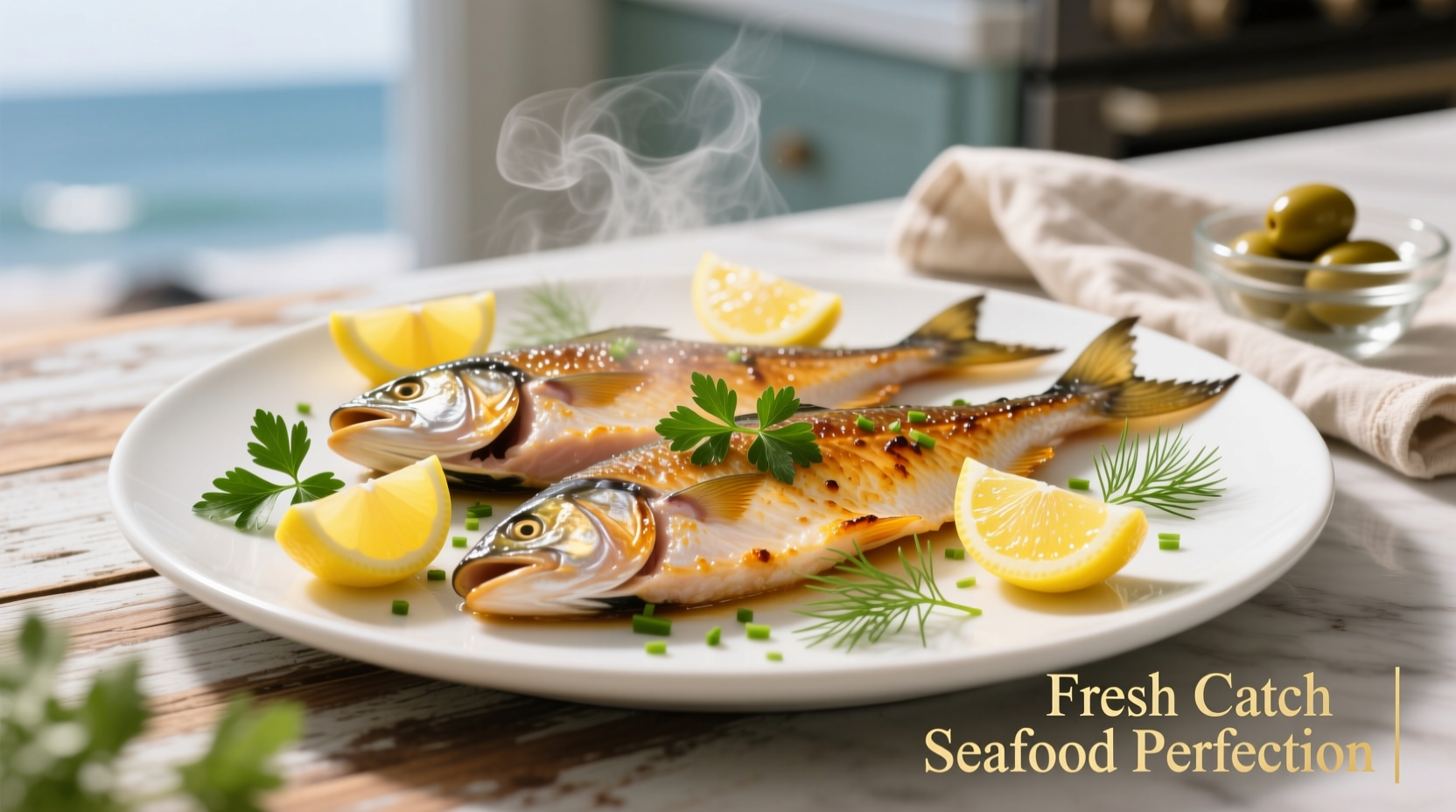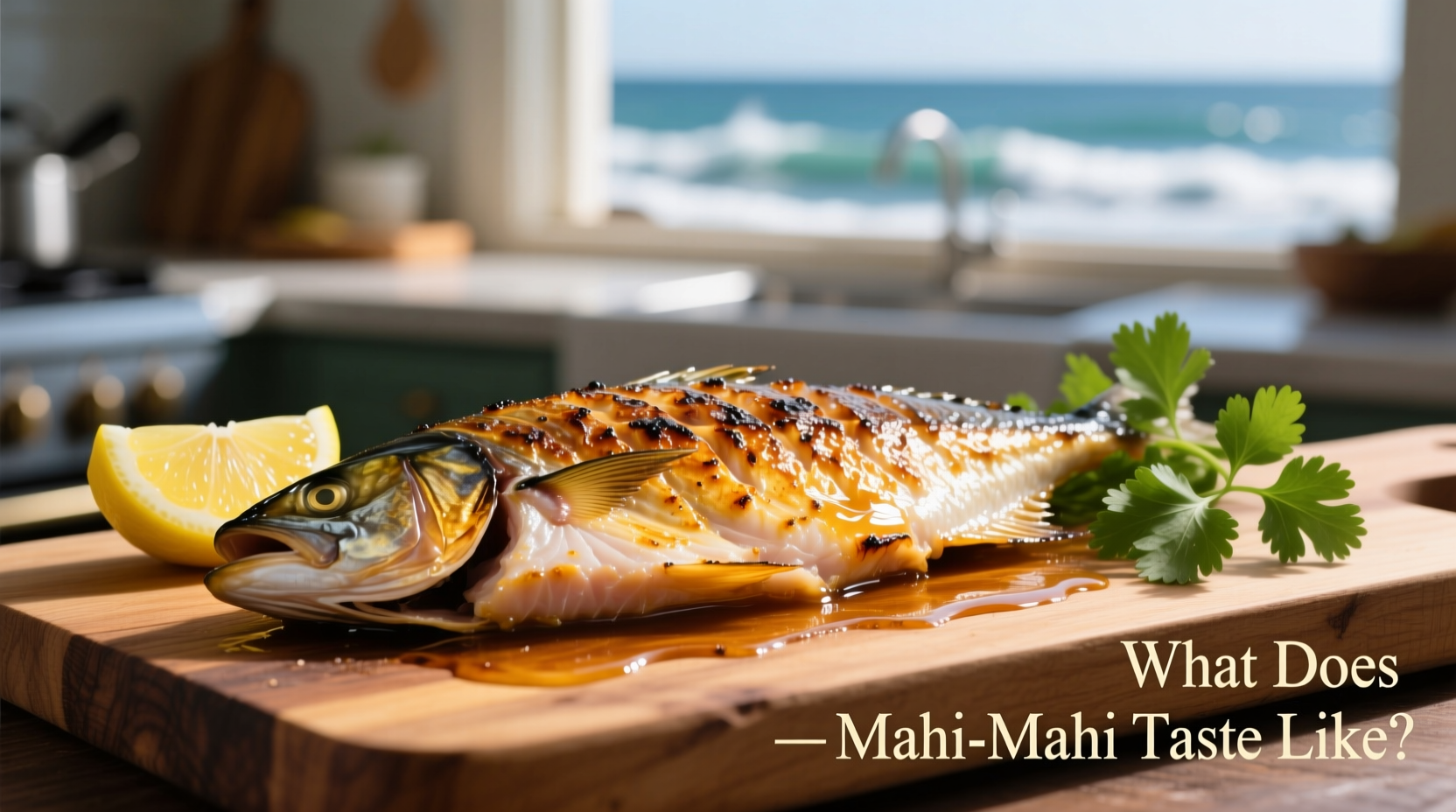Maui mahi mahi offers a mild, sweet flavor with firm, meaty texture that's less fishy than many seafood options. This versatile fish has a clean taste profile often described as a cross between swordfish and halibut, making it perfect for beginners and seafood enthusiasts alike. You'll discover how its flavor transforms with different cooking methods, ideal pairings to enhance its natural sweetness, and common mistakes that can ruin its delicate taste.
Understanding Mahi Mahi's Distinctive Flavor Profile
When you take your first bite of properly prepared mahi mahi, you'll notice a subtle sweetness with mild oceanic notes that never crosses into "fishy" territory. Unlike stronger-flavored fish like mackerel or bluefish, mahi mahi maintains remarkable neutrality while still delivering that satisfying seafood essence many diners seek.
The texture plays a crucial role in the overall experience. Cooked correctly, mahi mahi offers firm, meaty flakes that hold together well—more substantial than flaky cod but less dense than swordfish. This "just right" texture makes it exceptionally versatile in the kitchen, adapting beautifully to various cooking techniques without falling apart.
| Fish Variety | Flavor Intensity | Texture Characteristics | Best Cooking Methods |
|---|---|---|---|
| Mahi Mahi | Mild to moderate | Firm, meaty, large flakes | Grilling, broiling, pan-searing |
| Swordfish | Moderate | Very dense, steak-like | Grilling, roasting |
| Halibut | Mild | Firm but delicate, fine flakes | Baking, poaching, pan-frying |
| Cod | Very mild | Soft, flaky | Steaming, baking, frying |
How Cooking Transforms Mahi Mahi's Flavor
The cooking method dramatically impacts mahi mahi's final taste experience. When grilled over medium-high heat, the exterior develops a beautiful caramelized crust while the interior remains moist and tender. This technique enhances the fish's natural sweetness through the Maillard reaction—those complex flavor compounds that develop when proteins and sugars interact with heat.
According to culinary research from the Culinary Institute of America, fish with moderate fat content like mahi mahi (approximately 1.7% fat) responds exceptionally well to dry-heat cooking methods. The moderate fat content provides enough moisture to prevent drying out while allowing for excellent browning. When pan-seared properly, you'll notice how the natural sugars in the fish caramelize, creating subtle nutty notes that complement its inherent sweetness.
Overcooking remains the most common mistake that transforms mahi mahi from delightful to disappointing. When cooked beyond 145°F internal temperature (the FDA recommendation for fish), the proteins tighten excessively, squeezing out moisture and creating a dry, stringy texture that masks its delicate flavor. For optimal results, remove mahi mahi from heat when it reaches 140°F—it will continue cooking from residual heat to the perfect 145°F.

Perfect Pairings for Mahi Mahi
Mahi mahi's mild sweetness serves as a perfect canvas for complementary flavors without overwhelming them. Citrus elements like lime, lemon, or orange work exceptionally well, cutting through the richness while enhancing the fish's natural sweetness. A simple squeeze of fresh lime juice just before serving can transform a basic preparation into something extraordinary.
Chef consensus gathered from professional culinary forums shows that tropical fruit salsas—particularly mango, pineapple, and papaya—create the most popular flavor combinations with mahi mahi. The natural enzymes in these fruits interact beautifully with the fish's proteins, creating complex flavor layers that satisfy both casual diners and culinary connoisseurs.
When seasoning, less is often more. A light application of complementary herbs like cilantro, parsley, or dill allows the fish's flavor to shine. For those who enjoy spice, a moderate application of mild chilies (like poblano or Anaheim) works better than intense heat that would overwhelm mahi mahi's delicate profile. Avoid heavy spice blends that dominate rather than complement.
Selecting Quality Mahi Mahi
Your cooking experience starts long before you reach the kitchen—with proper selection at the market. Fresh mahi mahi should have a clean, ocean-like aroma (never fishy or ammonia-like) with firm, springy flesh that bounces back when gently pressed. The color provides important clues: high-quality raw mahi mahi displays vibrant pinkish-tan to light beige hues with distinctive darker stripes running vertically along the fillet.
According to NOAA Fisheries guidelines, frozen-at-sea mahi mahi often delivers superior quality to "fresh" fish that has traveled long distances. When properly flash-frozen immediately after catch, the fish maintains its texture and flavor better than fish transported over days to reach market. Look for products labeled "sashimi-grade" or "previously frozen" for the best quality assurance.
Sustainability considerations matter too. The Monterey Bay Aquarium's Seafood Watch program currently rates U.S. and Caribbean-caught mahi mahi from troll or pole-and-line fisheries as a "Best Choice," while recommending avoidance of longline-caught options due to bycatch concerns. Choosing responsibly sourced fish ensures both quality and environmental responsibility.
Practical Preparation Guide
For perfect results every time, follow these professional chef techniques:
- Dry thoroughly before cooking—moisture prevents proper browning
- Season just before cooking to prevent drawing out moisture
- Cook skin-side down first if skin-on for crisp texture
- Maintain consistent heat—medium to medium-high works best
- Let rest 3-5 minutes after cooking for optimal texture
One simple preparation method favored by coastal chefs involves minimal seasoning (just salt, pepper, and a touch of garlic powder), followed by pan-searing in avocado oil for 3-4 minutes per side. Finish with a squeeze of fresh lime and a sprinkle of chopped cilantro. This technique highlights the fish's natural flavor while creating that desirable crust that enhances overall taste perception.
Avoiding Common Flavor Pitfalls
Many home cooks unintentionally compromise mahi mahi's delicate flavor through common mistakes:
- Over-marinating—acidic ingredients like citrus or vinegar can "cook" the fish prematurely, creating an unpleasant texture
- Using overpowering sauces that mask rather than complement the fish's natural taste
- Cooking from frozen without proper thawing, leading to uneven cooking
- Using insufficient heat, preventing proper searing and resulting in steamed rather than seared texture
When preparing mahi mahi, remember that its moderate fat content means it benefits from careful attention to cooking time. Unlike fattier fish like salmon that forgive slight overcooking, mahi mahi transitions quickly from perfectly cooked to dry and tough. Using an instant-read thermometer takes the guesswork out of achieving optimal doneness.











 浙公网安备
33010002000092号
浙公网安备
33010002000092号 浙B2-20120091-4
浙B2-20120091-4